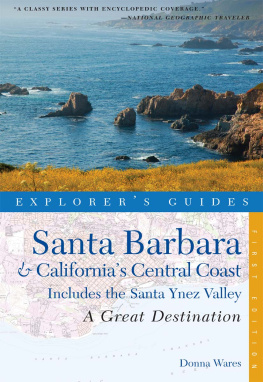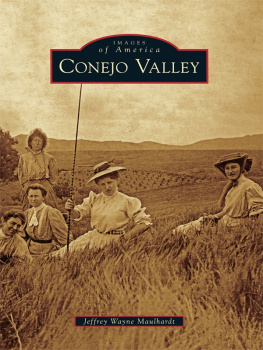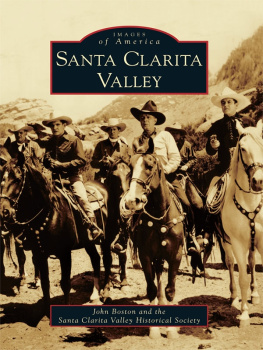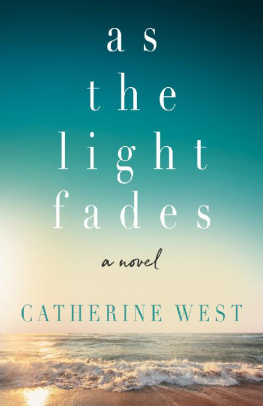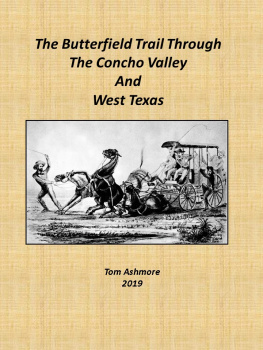Stephens Kim - The Santa Clarita Valley
Here you can read online Stephens Kim - The Santa Clarita Valley full text of the book (entire story) in english for free. Download pdf and epub, get meaning, cover and reviews about this ebook. City: Santa Clarita Valley (Calif.);California;Santa Clarita Valley, year: 2014, publisher: Arcadia Publishing;Arcadia Publications, genre: Detective and thriller. Description of the work, (preface) as well as reviews are available. Best literature library LitArk.com created for fans of good reading and offers a wide selection of genres:
Romance novel
Science fiction
Adventure
Detective
Science
History
Home and family
Prose
Art
Politics
Computer
Non-fiction
Religion
Business
Children
Humor
Choose a favorite category and find really read worthwhile books. Enjoy immersion in the world of imagination, feel the emotions of the characters or learn something new for yourself, make an fascinating discovery.

- Book:The Santa Clarita Valley
- Author:
- Publisher:Arcadia Publishing;Arcadia Publications
- Genre:
- Year:2014
- City:Santa Clarita Valley (Calif.);California;Santa Clarita Valley
- Rating:4 / 5
- Favourites:Add to favourites
- Your mark:
- 80
- 1
- 2
- 3
- 4
- 5
The Santa Clarita Valley: summary, description and annotation
We offer to read an annotation, description, summary or preface (depends on what the author of the book "The Santa Clarita Valley" wrote himself). If you haven't found the necessary information about the book — write in the comments, we will try to find it.
The Santa Clarita Valley — read online for free the complete book (whole text) full work
Below is the text of the book, divided by pages. System saving the place of the last page read, allows you to conveniently read the book "The Santa Clarita Valley" online for free, without having to search again every time where you left off. Put a bookmark, and you can go to the page where you finished reading at any time.
Font size:
Interval:
Bookmark:

THEN & NOW
THE SANTA
CLARITA VALLEY

OPPOSITE: The tiny Castaic train station opened at Castaic Junction in 1887 after the Southern Pacific Railroad ran a branch line from Saugus to Santa Barbara. In this 1909 photograph, two ladies with tennis equipment wait patiently for the next train. The station was destroyed in the St. Francis Dam disaster in March 1928. (Courtesy of scvhistory.com.)
THEN & NOW
THE SANTA
CLARITA VALLEY
Dr. Alan Pollack,
Kim Stephens, and E.J. Stephens
Alan would like to dedicate this book to his furball family: Bella, Montana, Bonnie, and Palmer. (Please adopt an animal today!) And many thanks go to my coauthors, Kim and E.J. They are dear friends and a joy to work with!
Kim and E.J. would like to dedicate this book to our children, Mariah and Dylan, who are beginning their individual paths of discovery. We could not be more proud of the two of you, and we look forward to reading your autobiographies (and to holding the grandchildrenbut no rush on that!). We would also like to thank our great friend and creative partner Alan Pollack, whose love for Santa Clarita Valley history has made this book possible.
Copyright 2014 by Dr. Alan Pollack, Kim Stephens, and E.J. Stephens
ISBN 978-1-4671-3153-7
Ebook ISBN 9781439645055
Library of Congress Control Number: 2013950414
Published by Arcadia Publishing
Charleston, South Carolina
Then and Now is a registered trademark and is used under license from Salamander Books Limited
For all general information, please contact Arcadia Publishing:
Telephone 843-853-2070
Fax 843-853-0044
E-mail
For customer service and orders:
Toll-Free 1-888-313-2665
Visit us on the Internet at www.arcadiapublishing.com
ON THE FRONT COVER: On the evening of November 10, 1929, former rodeo rider and cattle rustler Buffalo Tom Vernon loosened 60 feet of track next to Bakers Rodeo Arena, causing the derailment of the West Coast Limited. He then escaped, but not before robbing the passengers of about $300. Vernon was later captured in Pawnee, Oklahoma, and brought back to California to serve a life sentence in Folsom Prison. Today, the site of the train robbery is next to the Metrolink train station on Soledad Canyon Road. (Then image courtesy of scvhistory.com; now image courtesy of E.J. Stephens.)
ON THE BACK COVER: Matinee Western superstar Tom Mix, atop Tony the Wonder Horse, appears to leap Newhalls Beales Cut in this still from 1923s Three Jumps Ahead. It is uncertain whether the leap actually occurred, as the film is now lost. What is known is that Will Rogers spoofed the stunt that same year in Uncensored Movies, where he one-ups Mix by appearing to clear the cut on a horse that turns a complete loop, mid-leap! (Courtesy of scvhistory.com.)
CONTENTS
ACKNOWLEDGMENTS
As in our previous publication, Legendary Locals of the Santa Clarita Valley, we were blessed with the assistance of a great many people who share our love for the Santa Clarita Valley during the creation of this book. At the top of the list is Leon Worden of SCVTV, who provided us with most of the historical images from his amazing website scvhistory.com.
We would also like to thank Mike Stephens for providing us with the camera equipment used in capturing most of the modern-day photographs.
Thanks also go to Jared Nelson of Arcadia Publishing, Laurene Weste, Bill West of SCV in the Movies, Megan Perez of SCVTV, Renaud and Sue Veluzat of the Melody Ranch Motion Picture Studio, Bobby Clark, Hugh Munro Neely, the Santa Clarita Valley Historical Society, and the Friends of Hart Park. Special thanks to our amazing Newhallywood Tours guests for helping us find many of the locations presented inside. And once again, thanks go to the wonderful folks at FreshWorks in Valencia for providing hours of free Wi-Fi and gallons of iced tea while we wrote this book. Unless otherwise noted, all historic images appear courtesy of scvhistory.com, and all modern image are by the authors.
INTRODUCTION
Welcome to the Santa Clarita Valley of yesterday and today.
Southern Californias Santa Clarita Valley (SCV) is home to over a quarter-million residents who enjoy its mild Mediterranean climate, ample parks and green space, vibrant business environment, low crime rate, and close proximity to both the beach and the high desert. It is no wonder that the SCV consistently ranks among the best places to live in America.
The SCV stretches from north to south from the Angeles National Forest to the San Fernando Valley. The city of Palmdale lies at its eastern edge, and the Heritage Valley in Ventura County borders it on the west. Surrounded by the San Gabriel and Santa Susana Mountains, the SCV encircles the city of Santa Claritamade up of the districts of Valencia, Newhall, Saugus, and Canyon Countryalong with the communities of Castaic, Stevenson Ranch, Val Verde, Agua Dulce, and Acton.
While it is true that the Santa Clarita Valley is situated just minutes from the northern border of Los Angeles, please do not dismiss it as simply a bedroom community for the megalopolis to the south. The SCV has a rich history stretching back centuries.
A Native American tribe known as the Tataviam lived in the area for centuries before being subjugated by the Spanish, who arrived in 1769. During the Spanish Mission era that followed, the valley served as a cattle ranch for the friars. After Mexican independence, the area became the 48,000-acre Rancho San Francisco, owned by the Del Valle family.
Gold was discovered here in 1842, which predated the more famous strike at Northern Californias Sutters Mill by six years. Unlike its northern counterpart, the SCVs gold discovery created no noticeable rush and was largely overlooked by the press.
Americans took control of the valley after the land grab known as the Mexican-American War, which resulted in statehood for California in 1850. The valleys strategic location made it a vital transportation link between the cities and pueblos of Northern and Southern California.
During the Civil War, Edward F. Beale deepened a previously dug pathway between the SCV and the San Fernando Valley to 90 feet. It became known as Beales Cut and was used for cattle drives and as a pathway for wagons and stagecoaches for decades.
Auctioneer and railroad speculator Henry Mayo Newhall later bought the remnants of the old Rancho San Francisco and, in 1876, established the town bearing his name as a stop on the Southern Pacific Railroad. During that same year, one of the worlds longest railroad tunnels was dug nearby, and at the valleys Lang station, the Southern Pacifics rail lines between the two halves of California were first linked.
Oil had been discovered earlier in the valley, but the pivotal US centennial year of 1876 brought the state its first successful gusher in the valleys Pico Canyon. This well, known as CSO (California Star Oil) No. 4, pumped for the next 114 years. A pipeline was stretched from Pico Canyon to the first refinery in the state, Newhalls Pioneer Refinery.
For years, cattle rustling was a local pastime, and a decades-long range war raged between rival clans. Legendary bandit Tiburcio Vasquez visited during the 1870s and hid out for a time among the valleys otherworldly rocks, which now bear his name. Vasquez Rocks later became the backdrop for hundreds of Westerns.
While many cities claim to be the progeny of the Old West, few can profess to be where that colorful eras events occurred, as well as where those happenings were later recreated by Hollywood. The SCV can rightfully claim this two-tiered history as its own.
Next pageFont size:
Interval:
Bookmark:
Similar books «The Santa Clarita Valley»
Look at similar books to The Santa Clarita Valley. We have selected literature similar in name and meaning in the hope of providing readers with more options to find new, interesting, not yet read works.
Discussion, reviews of the book The Santa Clarita Valley and just readers' own opinions. Leave your comments, write what you think about the work, its meaning or the main characters. Specify what exactly you liked and what you didn't like, and why you think so.

